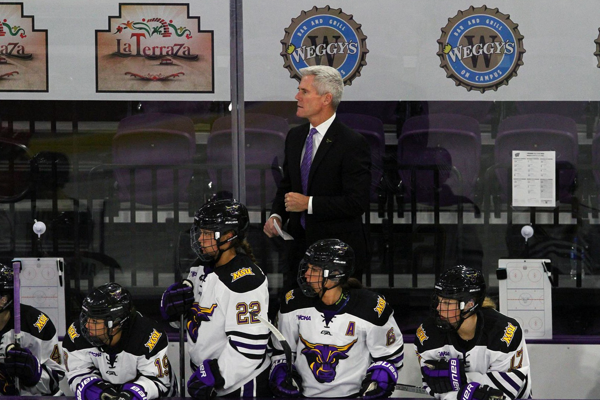As the puck carrier crosses the blue line, we want them to know where their teammates are on the ice — and where they’re going to be. Keeping your head on a swivel is a part of developing hockey sense. Surveying the ice helps the puck carrier read the play, anticipate pressure, identify passing lanes, and so on.
“Have an idea before getting contested,” Harrington said. “Instead of getting contested and then saying OK where is everybody else?”
But it is just as important for the players without the puck to survey the situation. How the defense is playing the puck carrier as they cross the blue line will determine how the player without the puck should be reacting.
“If the defending team is playing the [puck carrier] tight at the blue line, it should be near lane support. They need support right there when entering the zone,” Harrington said. “If the defense is back and there is space, it’s important the other players see that and there is net drive. So we open up room for the extra person that is getting into the attack.”
Coaches need to beware of making rules, especially for younger players, like center lane always drives the net on an odd-man rush. This can lead to players not reading the play and reacting to what is open.
“They’ll put their head down and they’ll have no idea what the level of possession is with the puck on the wall,” Harrington said. “It’s having an awareness without the puck.”
Coaches should always be encouraging young players to keep their heads up and on a swivel, whether it’s retrieving pucks in the defensive zone, getting open, or stickhandling in the driveway.



